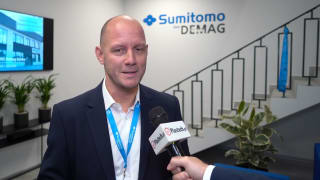With its advanced expertise in automation, ENGEL provides an essential contribution to the efficiency and flexibility of the process. Heating the foil and removing the component from the mold is handled by an ENGEL viper linear robot. In addition, in an easiCell placed directly next to the clamping unit of the injection molding machine, an ENGEL easix articulated robot is integrated with the laser station for the precision cutting of the foils. Thanks to its standardized and modular construction, the automation cell developed by ENGEL allows for the extremely space-saving integration of robots, as well as process units located up- and downstream of the injection molding. It also significantly reduces the complexity of the application. The entire process can be operated using the CC300 control unit of the injection molding machine. The uniform control logic throughout all components of the production cell makes it especially easy for the machine operator to confidently handle the integrated process without any special training.
Medical: Interdental brushes in a one-shot process
The healthcare application presented in Orlando also impresses with an extremely high degree of integration. Interdental brushes known as "scrub!" and developed by Pheneo (Germany) will be produced on a clean-room version of the all-electric e-motion 170/110 T injection molding machine. Together with the grip surface and core, up to 500 bristles can be formed in a single-component injection mold. Extremely delicate in the bristle area, the high-performance precision 8-cavity mold comes from Hack Formenbau (Germany), with Hekuma (Germany) providing the automation. A highly integrated, automated production cell will be presented, built in the modularized HEKUflex design by Hekuma. Immediately after injection molding, the parts will be inspected by a vision system and packed in retail bags, 16 parts to each. A bag leaves the production cell every four seconds."With our highly-integrated manufacturing process and the single-component construction we exponentially surpass the efficiency of established products and processes in the market", states Jon Kelm, Manager of Medical and Packaging Business Units for ENGEL North America. "As a rule, interdental brushes consist of three components – the grip surface, a wire mesh, and the filaments – which are usually produced in independent processes. By contrast, our solution does away with entire work steps, and reduces the logistical effort.

The production technology developed by ENGEL in cooperation with Hack Formenbau and Hekuma makes it possible to fully form up to 500 bristles using a single-component process.




